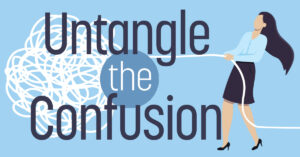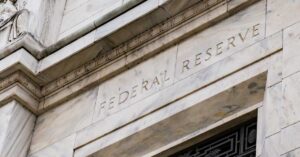The financial world is complex and economic bubbles are a recurring problem. Historically, market bubbles have been triggered by a wide range of factors, varying from unsustainable economic growth to highly leveraged and speculative asset purchases to the overabundance of cheap credit.
Whether discussing the famous Dutch “tulipmania” of the 1600s, the real estate crisis of 2008 or today’s potential bubble in stocks tied to artificial intelligence, economic bubbles happen for a variety of reasons. Because of that, predicting when the next one will occur is no easy task. As a commercial mortgage broker or lender, it’s important to have an in-depth understanding of these issues to be prepared for the next bubble.
“The bursting of the U.S. housing bubble in 2008 helped to usher in a financial collapse that had extensive impacts on all sectors of the global economy, including the commercial real estate market.”
What is an economic bubble? Simply put, it’s a portion of an economic cycle that is characterized by a rapid escalation in market value, particularly in the price of assets. This fast inflation is followed by a quick decrease in value that is often referred to as a crash or a burst bubble.
One sign that a bubble may be forming is the accelerated growth in the price of a particular asset. This could include anything from housing prices to tech stocks or even commodities such as oil.
Bubble origins
The bursting of the U.S. housing bubble in 2008 helped to usher in a financial collapse that had extensive impacts on all sectors of the global economy, including the commercial real estate market. The crisis led to a significant reduction in the availability of credit, making it difficult for businesses to obtain financing for most real estate projects. This led to a slowdown in construction and development activities.
The decline in the commercial real estate market forced many businesses to lay off employees or reduce salaries, resulting in a decline in consumer spending. Many companies had to downsize or close their doors, leading to a surplus of vacant commercial properties that subsequently resulted in lower rent prices and lower property values.
Commercial real estate today might be described as having many aspects of a bubble, with some observers speculating that a crash may be coming. One reason for this could be the high cost of both owner-occupied housing and multifamily rental housing.
An economic bubble has many parents, possibly including inadequate industry oversight or fraud. But one of the main factors is speculation. This refers to the act of conducting a financial transaction that has substantial risk of losing value while also holding the expectation of a significant gain.
Not to be confused with investing, speculation plays havoc with the economy in general. It destroys consumer confidence and restricts commercial real estate lending, making it harder and more expensive to obtain a loan. This in turn requires the commercial mortgage broker to be more innovative and develop a more creative business strategy.
An old nemesis
Economic bubbles are nothing new. History is littered with remnants of irrational exuberance followed by price crashes. They have occurred in all types of asset groups, such as equities and debt instruments, commodities and real estate. While there have been many, a few recent bubbles stand out.
• Black Monday. The stock market crash of Oct. 19, 1987, resulted in approximately $500 billion in losses and was caused in part by a strong bull market that was due for a correction.
• Dot-com bubble. This stock market bubble was fueled by skyrocketing values for publicly traded, internet-based startups with no track record. The bubble burst, wiping out many fledgling companies. From March 2000 to October 2002, the tech-heavy Nasdaq composite index fell by 77%.
• Great Recession. One of the most spectacular examples of panic in the global financial markets occurred in the fall of 2008. The bursting of the housing market bubble led to a variety of events, including the collapse of investment banks Bear Stearns and Lehman Brothers. It also resulted in the federal government’s takeover of Fannie Mae and Freddie Mac. The event triggered a decline in U.S. home values of approximately $2.44 trillion.
Looking for signs
While bubbles are somewhat hard to predict, experts have identified some basic stages in the life cycle of a bubble. The following are shortened interpretations of these stages.
Rapid growth. This occurs when investors become infatuated with a new concept, such as emerging technology or a broadly accepted product. Investors are quick to back the latest thing and, in many cases, do so with highly leveraged funds.
Irrational exuberance. Investors demonstrate strong enthusiasm and attraction to a specific asset based on its current high performance without giving thought to its fundamental value. Initially, prices rise slowly but then accelerate as more money flows into the asset. This sets the stage for the boom phase, in which the asset attracts widespread attention and media coverage. The number of investors jumps as caution is thrown to the wind and the asset’s price skyrockets.
Profit taking. A small number of investors recognize the warning signs that the bubble is about to burst. They begin to sell their positions and take profits. Estimating the exact time when a collapse will occur, however, is a difficult process.
Panic. Investors realize too late that it’s time to sell and quickly exit the asset. It may only take a minor event to puncture a bubble. But once it happens, the bubble cannot be inflated again. In the panic stage, asset prices decrease as rapidly as they accelerated. Confronted with margin calls, speculators now want to sell at any price. As supply overcomes demand, asset prices collapse.
Risk management
Although there is no one right or best strategy for commercial mortgage brokers and lenders to deal with a bubble, it is crucial they stay abreast of the market sectors they serve. They should also incorporate a robust risk management policy and financial analysis strategy into the origination process.
Mortgage brokers need to diversify their potential client base and stay informed on their lenders’ changing approval criteria. By adhering to these processes, brokers can stay ahead of the financial curve and avoid the overactive investment sectors that may rapidly evaporate due to a recession, inflation or regulatory changes.
In difficult financial times, brokers should expect to see many changes in underwriting standards, including the frequent use of new or expanded financial covenants. An example of a covenant is when a borrower agrees to maintain a minimum financial ratio, such as working capital, total assets to debt, or debt to equity. Covenants require borrowers to comply with the terms in the loan agreement.
Financial covenants serve as a safety net for the lender. The objective is to reduce the risks associated with the loan. By making it a binding part of the documentation, the lender ensures a greater degree of security.
A risk management strategy involves actions and activities designed to manage risks. It’s about taking steps to reduce or control the likelihood or severity of negative consequences. A risk management strategy is usually based on the principles of identifying all possible risks and their possible causes. This includes evaluating each risk to determine its probability and severity; developing a plan to manage each identified risk; closely monitoring the progress of the plans; and reviewing and revising the plans as necessary.
Finding opportunities
Despite this doom and gloom, there are opportunities for commercial mortgage brokers who closely follow the market and have a thorough understanding of their lenders’ underwriting criteria. It is widely reported that approximately $1.5 trillion in commercial mortgages will need to be refinanced over the next couple of years. This may present a unique set of challenges based on current interest rates, inflation and banks being wary of the level of commercial mortgages in their portfolios.
Mortgage brokers may be able to place these loans with new lenders. Additionally, many of the terms and conditions of existing loans will need to be renegotiated. The new loans will certainly face elevated interest rates, which will place more attention on the borrower’s cash flow and net operating income. New appraisals also may be required to establish current and changing property values.
● ● ●
Predicting when the next financial bubble will occur is difficult, but originators should closely monitor the industries they serve and be prepared to employ risk management strategies, such as diversification and regular credit monitoring of borrowers. It is important to approach each financial cycle as an opportunity to refine risk management strategies, then strive to create better financial products that can achieve positive results in a variety of scenarios.
Are you ready for the next economic bubble? You should be. Remember, the next one is currently in the making and will occur all too soon. Stay alert, stay sensitive to market changes and be ready to make appropriate changes to your current business strategy. When the next bubble happens, you’ll be glad you did. ●
Author
-
Garry Barnes is managing director of PW Partners Consultancy, headquartered in Salt Lake City, and is a freelance writer. He is a former president and CEO of banks in Arizona, California and Utah. He has taught at the university level, and is a frequent writer and lecturer on banking, finance and real estate matters. Barnes has served on the U.S. Small Business Administration’s National Advisory Council and received the SBA Arizona Financial Services Advocate of the Year award.





